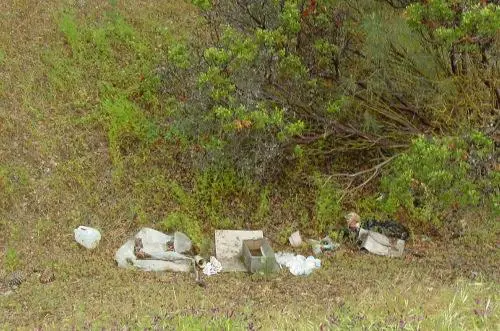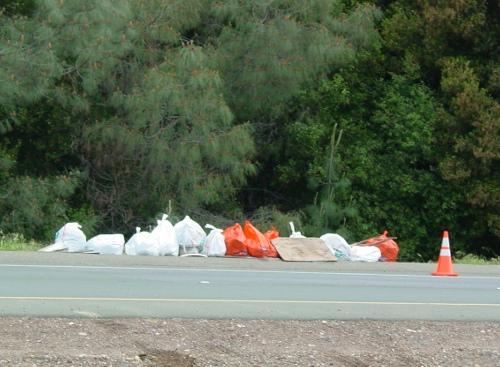- Lake County News Reports
- Posted On
Foodie Freak: Thoughts on fava beans

I have a love/hate relationship with fava beans. Sure they are delicious, and I grab every pod at the grocery store that I see, but all the while I’m grumbling about paying by the pound for something when three quarters of the weight you’re paying for gets thrown away.
My feelings are exacerbated by the fact that fava beans are aren’t cultivated as a cash crop but many times are grown as a “green manure” to improve the soil and kill off weeds. You see, if you want to start a new plot for growing vegetables, the best and most organic way is to plant the entire area heavily with fava beans. The long, thick roots break up the soil and add nitrogen organically making soil conditions ideal for the next crop.
In addition, the plants grow several feet tall which choke off the light to any young weeds, thereby naturally eliminating them. Once the plants have finished growing and producing their “crop,” the beans are harvested and the plants are just mowed down and tilled into the soil, further enriching it for the “real” crops next season.
Fava beans are similar to tomatoes in that they have many different names and even varieties such as horse bean, faba bean, field bean, broad bean (the word “fava” is Italian for broad), pigeon bean, tic bean, and Windsor bean, just to name a few.
Fava beans are just beginning to see a surge in popularity in America and you should expect to find them more in the next few years. They will be gaining a larger slot in the produce section of your local market, as well as being featured more often on restaurant menus. Just you wait and see.
They are available almost year-round but are best in the spring and fall. I haven’t seen any for months but over the last month I’ve noticed they are available locally.
Here in Lake County, you can grow fava beans nine months of the year. Summer is not a good time because fava beans don’t like hot weather. They are frost and drought hardy. They suffer from few pests and diseases, but aphids, chocolate spot, and powdery mildew are the most common problems. A notable feature of fava beans is if they are grown when the temperature is 60 degrees or lower they fix (add) more nitrogen to the soil within a couple of months than any other crop.
When selecting fava beans most folks recommend avoiding discolored beans or ones with any markings, but I disagree with this philosophy for a couple of reasons.
One reason is that I rarely find beans without markings or dark spots even when they are grown in my own garden under my ever-watchful eye. And second, you are going to be throwing away the pod anyway, so marks on it aren’t really of any consequence.
I prefer to be a little simpler in my selection: I look for large, plump, heavy pods that look like giant green beans. I’m not so picky about wilted, discolored, or leathery pods because, again, I’m throwing the pods away. As long as the beans inside still feel plump and firm to gentle pressure, the unattractive pods are doing their job of keeping the bean fresh and safe, so why discriminate because of it?
Fava beans first seem to have appeared in the Neolithic era. There is evidence of people eating fava beans dating back about 7,000 years and were commonly eaten in ancient Rome and Greece. Hey, I just had a thought: prehistoric hunter/gatherers were nomadic people so shouldn’t they be called “Ancient Roam”? OK, back to the point.
Fava beans are a very powerful food. For instance, although fava beans are native to the Mediterranean, a lack of a certain enzyme in some Mediterranean people causes raw fava beans to be deadly to them. This condition is called Favism and it attacks the kidneys and hinders the blood’s capability to carry oxygen. Luckily it only pertains to the raw beans; cooked beans are harmless to most people. However, in an odd twist of fate, people missing this enzyme are resistant to malaria.
If you are taking any kind of MAO inhibitors you should also avoid fava beans since they contain tyramine which, when mixed with MOAI, can result in “Cheese syndrome” which includes high blood pressure, migraines, accelerated heartbeat, and the possibility of stroke.
There is a chemical in fava beans than can actually treat Parkinson’s disease better than its prescription equivalent. (Remember; consult with your doctor first before making any changes in your diet in an effort to treat Parkinson’s. Ask him/her about Levadopa and Fava beans and get the full information.) So not only can fava beans cause strokes or kill, but they can also treat illness. Isn’t that just too cool?
The Greeks have a fascinating relationship with all kinds of beans which I could talk about for days, but I’ll stick to a couple of interesting points about the Fava bean. Pythagoras was so against the fava bean themselves that he wouldn’t let his followers eat them.
Legend says that, when being pursued by people who were going to kill him Pythagoras ran up to a field of fava beans and, because he so hated the beans, he allowed the crowd catch and kill him instead of entering the field and making his escape. Not all Greeks felt the same, some singing praises of the fava bean. Romans mention them in the world’s first cookbook and even sacrificed the beans to the gods. The fava bean was the only bean in the Old World before New World beans were discovered, so when you read in the Bible about beans, read Jack and the Beanstalk, or hear terms like “Bean counter” and “Spill the beans”, you should know that they were all referring to fava beans.
The flavor of fava beans is unique. They are a member of the pea family so there is a (be very careful if you are reading this out loud right now) definite “pea-ness” to their flavor. The best way to describe their flavor is three quarters pea and one quarter green bean. Yet the texture is very similar to a lima bean, another fairly large bean. The pods themselves are gigantic, with foot long pods not being uncommon. They are filled with a moist cottony fluff that cradles the beans.
To prepare, open the bean pod and remove the beans, toss the beans into boiling water for 10 to 15 seconds (blanching) then immediately drop into cold water to stop the cooking (shocking). Drain the beans, and with your thumbnail or a paring knife cut the thick opaque outer skin of the bean and remove the bright green tender bean. You now have the raw bean which is ready to be used just as it is or to be cooked to your preference. The leftover pods are inedible and useless except in the compost pile.
Despite the tedious process to prepare the raw beans being about as easy as getting a teenager to clean their room, they are well worth the work for their flavor and uniqueness. You can add fava beans into many dishes, even replacing the chickpeas in hummus and falafel. You can puree cooked beans into a sauce, or layer them into vegetarian lasagna, add them to a salad or risotto, and I hear they go very well with nice Chianti.
Fava beans do have a slightly grainy structure so getting them on skewers is next to impossible. Some recipes advocate cooking fava beans inside their skins and allow the diners to peel and eat them, but somehow that just seems inhospitable to me, like making a diner shell their own shrimp. There is one exception to this rule for me and that is ...
Grilled fava beans
1 pound fava beans, still in the pod
¼ cup olive oil
Toasted rounds of a French baguette (if toasted on the grill, BONUS POINTS)
Your favorite soft cheese (Chevre or Brie)
Crumbled bacon
Place the whole bean pods in a plastic bag with the olive oil, and shake until well coated. Lay the fava pods on the grill over direct heat. Grill until the pods start to really char (about 10 minutes). Remove and set aside to cool.
Meanwhile, put a dollop of cheese on each toasted French baguette round. Sprinkle with some of the bacon and when the bean pods have cooled enough to handle, remove the pod and the skin off of the bean and press the bean into the cheese on the baguette round and eat.
If you wish to have an interactive experience for your guests, let them remove the beans from the pods and outer skins and insert into the cheese themselves. This recipe would go well with grilled peel and eat shrimp since every body is already getting messy.
Ross A. Christensen is an award-winning gardener and gourmet cook. He is the author of "Sushi A to Z, The Ultimate Guide" and is currently working on a new book. He has been a public speaker for many years and enjoys being involved in the community.















